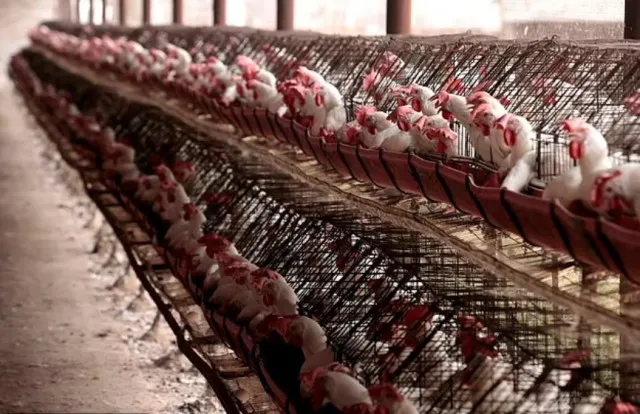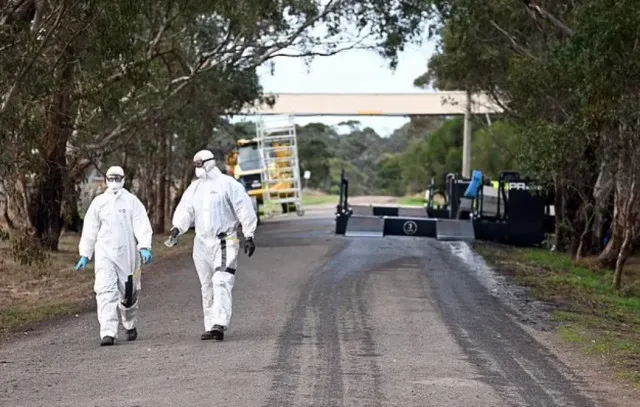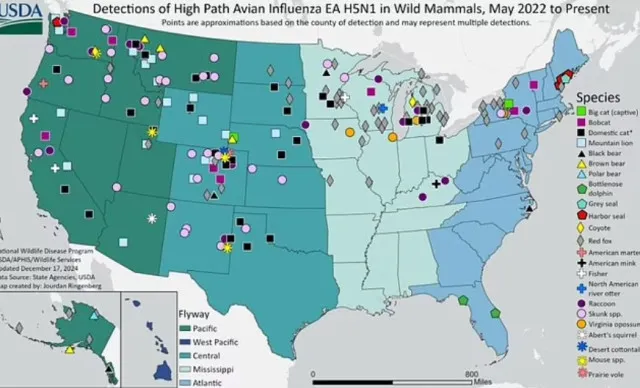Health experts are warning Americans to prepare for a potential pandemic as a new virus rapidly spreads across all 50 states.
Health experts are raising alarms about a possible new pandemic in the United States.
The H5N1 bird flu outbreak is spreading rapidly, particularly affecting farms across the country.
This situation has led to warnings about the risks to both animals and humans.
Current state of the bird flu outbreak
The H5N1 virus has already impacted nearly 1,000 dairy cow herds and has resulted in over 70 confirmed human cases.
Tragically, the first death linked to this outbreak was reported recently.

Experts from the Global Virus Network (GVN) say the risk to the U.S. poultry industry is high, especially in regions with dense farming practices where safety measures may be insufficient.
Since 2022, the bird flu outbreak has led to the loss or culling of more than 168 million poultry in the U.S. This has caused egg prices to soar, affecting consumers nationwide.
Risks of human transmission
Currently, there have been no confirmed cases of human-to-human transmission of the virus. However, experts caution that mutations in the virus could change this.
When two viruses infect the same host, they can exchange genetic material, which raises the risk of new strains that could spread among people.
The GVN is urging governments worldwide to take proactive measures against H5N1 by enhancing surveillance and enforcing stricter biosecurity protocols.
They emphasize the importance of preparing for the possibility of human transmission to prevent a situation similar to the early days of the COVID-19 pandemic.

Recommendations for public safety
Dr. Peter Palese, a leading influenza researcher, suggests that efforts should focus on improving biosecurity in agricultural settings.
He also highlights the need to educate the public about safely handling poultry products and understanding the risks related to infected animals.
‘Initiatives should focus on enhancing biosecurity measures in agricultural settings and educating the public about safe handling of poultry products and potential risks associated with contact with infected animals.’
Dr. Ab Osterhaus, another GVN expert, mentioned that developing a vaccine could be crucial in managing this crisis.
He added: ‘Given the growing circulation of H5N1 among mammals, the GVN calls for urgent efforts to understand and interrupt transmission in cattle through herd management and potential vaccination.
Government actions on vaccine development
The Biden Administration has awarded Moderna a significant contract of $590 million to create a vaccine for H5N1.
However, there are concerns that funding for this project may be reduced.
The Office of Pandemic Preparedness and Response (OPPR), which was established after COVID-19 to coordinate rapid outbreak responses, has reportedly been left underfunded and understaffed.

Recent cases and health risks
The first bird flu death in the U.S. was reported in January. The victim was an older individual in Louisiana with underlying health conditions who had contact with sick birds.
Health officials indicated that the virus had mutated within the patient, potentially leading to a more severe illness.
As of March 2024, there have been 70 confirmed bird flu infections across 14 states.
Most cases have been mild and primarily detected among farmworkers exposed to sick poultry or dairy cows.
Some recent cases in Missouri and California have raised questions about how those individuals contracted the virus.
Many experts consider H5N1 a top pandemic threat due to its widespread presence among animals and its rapid mutations.
Dr. Marc Johnson, a virologist, noted that while the virus might not cause a pandemic, it is making significant efforts to spread.
Since the virus was first detected in the U.S. in January 2022, over 12,875 wild and domestic flocks have been affected.
This year alone, the virus has been diagnosed in 1,031 herds across 17 states, with the majority found in California and Colorado.

Testing and monitoring efforts
Despite the growing concerns, mandatory testing for cattle and people exposed to the virus has been limited.
Currently, testing is only required for cattle moving between states. Experts have criticized the U.S. response to the outbreak, describing it as a pandemic “unfolding in slow motion.”
Cases have also been sporadically recorded in pigs, which adds to the concern.
Pigs can catch both human and bird strains of flu, making them potential “mixing vessels” for new virus strains.
Infections have also been found in over 400 non-bird wild animals. These include red foxes and seals, likely infected by eating sick birds.
Wastewater surveillance has detected the virus in 60 of the more than 250 monitored sites across the U.S.
In states like California and Iowa, over 80 percent of samples tested positive for the virus, indicating a widespread presence.
Preparedness and response measures
The U.S. has a stockpile of about 20 million bird flu vaccines that are well-matched to the H5N1 strain. Officials also have the capacity to produce 100 million more if needed.
Antivirals, such as oseltamivir (Tamiflu), are available and have been used to treat patients infected with the current strain.
Efforts to develop a bird flu vaccine for poultry are ongoing, and research is being conducted to determine the effectiveness of human antivirals on infected cattle.
As experts continue to monitor the situation, the focus remains on preventing further spread and preparing for potential future outbreaks.